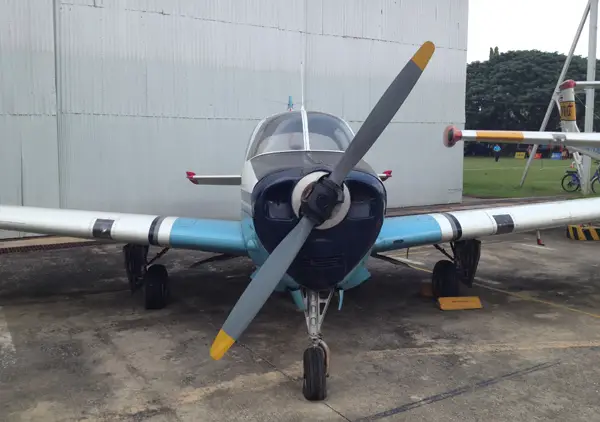For the Thai history aficionado, one of the biggest events this year in the English-language publishing industry will definitely be the release of Royal Orchid: The Anatomy of Civil Aviation in Thailand by Steve Darke and co-authored by Dr. Virachai Vannukul. Read in this exclusive preview Dr. Virachai’s Foreword:
“I first met the principal author, Steve Darke, over 10 years ago in Bangkok. He explained to me his dream of bringing this period of aviation history to life, and it became obvious during our talks that we could work as a team on the project. Since then he has driven me (and my family!) to dig up long-lost facts and figures from my many contacts within the Thai aviation industry, and he has woven these into his overall narrative.
Steve’s background, although professionally in construction, has involved a love of aviation and aeroplanes for over 50 years. In addition to already being a published author, his expatriate travels have allowed him to gain Private Pilot’s Licences in several countries, and to meet and get close to aviation professionals, military and civil, worldwide. In particular, whilst living and working in Bangkok, he built up a wide range of industry contacts, myself included, over more than 15 years.
After my further education in the USA, I joined Thai International in 1962, finally leaving in early 1972 as Director of Administration to become Managing Director / CEO of Air Siam. After forming my own company, VG Consultants, in 1977 I worked with Air Lanka to turn the company around, joined the Board of Bangkok Airways, and was an adviser to Thailand’s prospective second carrier, Angel Air. More recently I have been involved in advising start-up airlines in Iraq, Afghanistan and elsewhere. I have therefore been closely associated with, and in some cases been the decision-maker for, many of the events described in Steve’s book.
The importance of the subject is easy to overlook. Before World War Two Siam (later Thailand) successfully balanced the colonial pressures from Britain, France and others and, uniquely in the region, remained largely its own master. World War Two however changed this, Siam entering, albeit reluctantly, the Japanese sphere of influence. The defeat of Japan in 1945 therefore left a void, which many countries tried to fill.
The story of the development of civil aviation in Thailand then mirrors the contemporary political developments, with the USA becoming a greater influence than pre-war, but others playing a major part. The role of the Scandinavian countries in the development of the Thai national airline is an example. Thailand’s highly volatile governments, heavily influenced by the military, of course influenced everything. And then came the Vietnam conflict, which re-energised American involvement. These and other circumstances have affected the unique path which Thai civil aviation has taken.
As a subject, the development of civil aviation in Thailand has not been fully documented in any great or reliable detail to date. The only well-researched book on the topic is Edward Young’s 1995 Aerial Nationalism – A History of Aviation in Thailand, which covers both military and civil aviation but with an emphasis on the pre-1945 period and only an overview of the post-war period. Other than this resource, there is no significant book, in Thai or in English, which is dedicated to recording the post-war development of Thai civil aviation.
Having said all of the above, the authors (and I am honoured to be included in that title) intend this book to be a detailed reference to the scholar as well as an enjoyable read for the enthusiast.”


